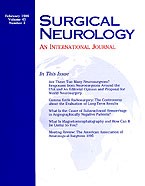Background: The risks of repeat concussions and returning to play (RTP) prior to the resolution of concussive symptoms are medically established. However, RTP guidelines for high school sports are varied and often notably absent. The island of Guam, a US territory, has a robust athletics program but lacks structure to reduce concussions or establish RTP protocols. Consequently, there is an opportunity to limit the incidence of “second-hit syndrome” and other harmful effects through education and testing.
Methods: We evaluated the feasibility of Sideline Concussion Testing SCT) as a novel feature of Guam high school athletics. Thirteen high school football players were observed over three consecutive football games. They were first given a questionnaire about concussion history, symptoms, medical evaluation, and RTP. Researchers used the King-Devick Test, a SCT tool, and baseline scores were recorded. If players were then observed to have significant head trauma or to show concussive symptoms, they were sidelined and tested.
Results: Five of 13 students had a previous concussion and limited awareness of RTP guidelines. Of those five, four received no medical consultation or stand down period before RTP. There was also a lack of understanding of what constitutes a concussion; five out of eight individuals who denied previous concussion confirmed having bell ringers, seeing stars, and other classic concussive symptoms. Over the course of the study the SCT identified three concussions, with significant deviations from baseline time on a test that measured visual and speech disturbances.
Conclusions: The feasibility of SCT use in Guam high school football was established and our pilot study identified areas for improvement. Established definitions of concussion and RTP guidelines were lacking. Therefore, an opportunity exists through public health efforts that involve the entire community to increase concussion awareness and reduce injuries in high school sports on Guam.
Summary Points:
- High school football players completed a questionnaire, listed symptoms, underwent medical examination, and performed K-D Test baselines and post-injury K-D Tests if a head injury occurred during any of the 3 games.
- The K-D Test detected 3 concussed athletes with significant deviations (5-8 s worse) than baseline K-D scores and showed several concussion symptoms.
- As concussed players resolved after 1-2 weeks post-concussion, K-D scores improved.
- Established sideline concussion testing would greatly improve the lack of concussion protocol and concussion awareness.

